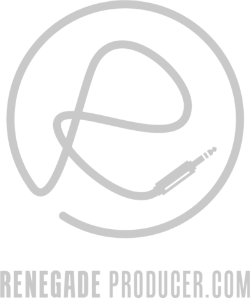25-step music production process checklist and video workshop >>>
The 7 Basic Music Theory Skills All Producers & Beatmakers Must Have to Be Proficient
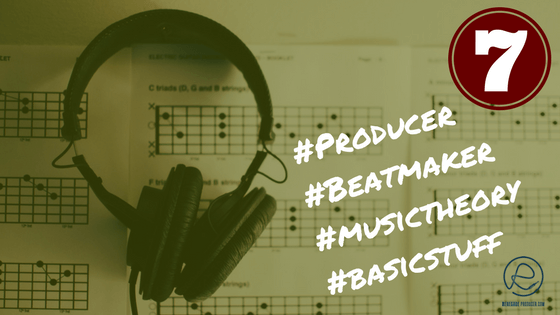
Confession: Music Theory was my second least favorite class at college, after Basic Electronics. I thought theory was about rules for classical musos and academics in ivory towers, not me.
Yeah, misguided to say the least. Forget rules. It's the things you can easily do with your music when you have a basic musical vocabulary. Those things, fellow Renegade, result in fun and profit!
You got the vocab?
Lucky for us, one only needs a very basic music theory vocabulary as an electronic music producer or beatmaker. That's not to say that more music theory knowledge won't help us make better music. Forget the music theory haters! It won't stifle your creativity or box you in with rules.
Music theory is a description, not a prescription. It attempts to describe symbolically the things we've done musically. The things that work and why they work.
A grasp of basic music theory, among other things, helps you to...
- ... compose your tracks much faster. Less trial and error.
- ... determine where musical issues lay in your track and fix them quickly.
- ... make your music more interesting.
- ... use time-tested musical devices to create exactly the emotions you want in your listener.
- ... collaborate better with other artists, producers and beatmakers who speak music theory.
- ... break the rules and produce something novel!
So, what basic music theory vocab does one need to have as a music producer or beatmaker?
Which practical music theory concepts does a music producer or beatmaker need to know?
- Beats & Bars
- Time Signatures
- Musical Notes
- Intervals
- Scales
- Chords
- Chord Progressions
Let's briefly expand on each of these basic music theory concepts:
This post is an introduction to concepts that, in the realm of music theory, are the most basic. A total newcomer to music theory may still find it complex. I try in this post to introduce the concepts and why they are important. I don't go in depth to keep the post brief.
Most producers or beatmakers in the production game for longer than a year or two have a decent understanding of the concepts and tools you'll find below. So, it's something you will pick up if you haven't yet. May as well start now:
Skill #1: Know & Use Beats & Bars
Some people call it a bar, others
call it a measure. Either way, as you probably know by now, it's an
indication of how we count a particular song or track.
Bars
form the invisible grid we hang our music onto. As musical notation
bars map out how long we count and beats or notes are the actual counts
themselves.
The simplest way to understand this, if you're new to music notation, is to count and clap:
1-2-3-4
Each count is called a beat or note. All four beats together make a bar.
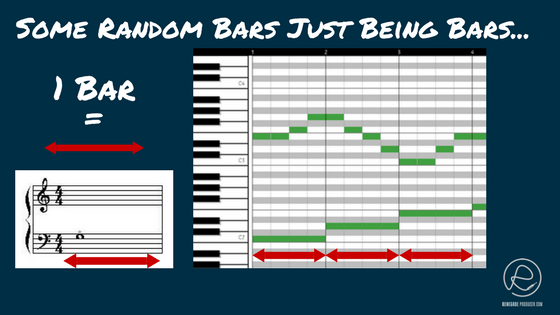
Why is this important to know and use?
Once you understand bars and beats you have the framework to not only write but also analyze music.
Music is composed in bars and beats. A standard section in a track is often 8 or 16 bars. A longer breakdown can be 24 or 32 bars. The ability to count music gives you x-ray ears into the blueprint behind any track.
You'll start to notice things as you count along with tracks you analyze. Certain things tend to work at certain points in the bar, like an 1/8th note hi-hat on the last eighth of each bar. Phrases or sections repeat over 8, 12, 16 bars. The first half of the bar contains the call and the second half of the bar contains the response. The kick tends to mark every beat of the bar while the snare holds steady on the 2 and 4 counts of the bar in most standard pop or dance tracks.
Most pop music uses common time, a.k.a 4/4, a.k.a four four time. So when you hear someone say four on the floor you know it's a common time signature with a kick on every quarter note of the bar.
Why 4 beats/notes and not 3 or 6 or 7? Why not indeed, Renegade!
Time to talk time signatures...
Skill #2: Know & Use Time Signatures
The time signature tells you how many beats per bar and what note value (length) equals one beat.
Luckily,
or unfortunately, depending on where you stand, most electronic dance,
hip-hop, R&B, rock or pop music sticks to a straight 4/4 time
signature, most of the time. Bottom line is, most punters can handle
the simplicity of a straight 4/4 time signature without losing count.
It gives them a solid feeling. They can follow the beat. 1, 2, 3, 4.
The bottom or second number represents the note value or duration of each note/beat.
The top or first number indicates how many notes/beats are counted per bar.
So, in 4/4, a.k.a. common time, you have 4 quarter-note beats per bar as you can see below:
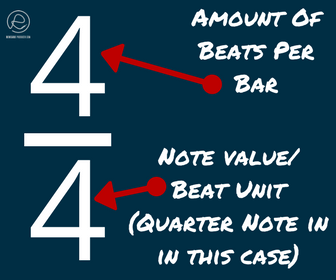
You can do about every track in 4/4 and get away with it. No shame in that.
Finding the old 4/4 a bit of a bore? Why not try some other time signatures just for gits and shiggles? 7/8 does it for me every time. It takes a bit of getting used to but lots of musical fun to be had when you break out of the 4/4 box and fly!
Skill #3: Know & Use Notes
Definition:
1. A pitched sound itself.
2. A sign used in musical notation to represent the relative duration and pitch of a sound (♪, ♫);
You probably know by now that Western music uses 12 notes:
C, C#, D, D#, E, F, F#, G, G#, A, A#, B
Each note has a pitch and a duration.
Note Length
The
duration, which is also called the note value or note length,
determines or describes how long a note lasts. These are usually
expressed in DAWs as:
1, 1/2, 1/4, 1/8, 1/16, 1/32, 1/64 and 1/128 notes.
A note length of 1 will last the entire bar.
A note length of 1/2 will last half a bar.
1/4 note - lasts a fourth or quarter of the bar.
This is important to grasp since it's the basic syllables of music. It helps you set your grid, when you work with quantize functions, when you write chords, sections, phrases, melodies and drum parts.
Note Pitch
The fundamental frequency at which the note vibrates determines the note pitch. This frequency is measured in Hertz (Hz). In DAW-based music production you will mostly deal with notes when you work in your MIDI piano-roll.
Double or halve the fundamental frequency of a note and you have the Octave of that note. In Western music we use 12 musical notes within each Octave. We label these notes with letters of the alphabet in the following way...
A, A#, B, C, C#, D, D#, E, F, F#, G, G# (when you move up the scale from low to high notes)
... or...
A, B♭, B, C, D♭, D, E♭, E, F, G♭, G, A♭ (when you move down the scale from high to low)
B♭ (B-flat) is exactly the same note as A# (A-sharp). We refer to it as B♭ when we move down the scale and we refer to the same note as A# when we move up the scale. The same goes for all the other sharps and flats.
At this point very basic music theory becomes a little bit less basic. Only a little...
Skill #4: Know & Use Intervals
A musical interval is the term used to describe the
distance in frequency between two notes. This is expressed in semitones
and tones. The note C# is one semitone away from C. The note D is one
tone away from C.
The interval between two notes determines the
musical character of the combination of these notes played together or
in succession. This is important as it forms the building blocks for
both scales and chords.
Each interval has a different quality or at least tends to evoke a certain feeling or emotion when you hear it. It's possible to recognize intervals by ear once you know them. This ability is handy because it helps you spot which intervals are used in other tracks when you analyze music. It can also help you make decisions when you write your own melody lines, bass lines and when you work on harmonies.
The Octave
An octave is the interval or distance in pitch between one musical pitch and another with half or double its frequency.
These notes sound the same and harmonize perfectly with each other. They just have higher or lower fundamental frequencies. This concept is important because most Western music uses a system that divides the octave up into 12 notes. The keyboard therefore only has 12 different notes but they are repeated at higher or lower frequencies.
We often refer to the different octaves by adding numbers to the letters to indicate which octave we are working with. You'd refer to A2 or E5, for example, to indicate the note and octave you want. Your DAW piano roll will most likely have the octave numbers displayed.
The interval is a crucial basic music theory concept to wrap your head around as a producer. It forms the basic building blocks of all the scales and chords we use.
You can train yourself to recognize intervals. Read this post to dig deeper:
Use Interval Ear Training to Develop Your Music Producer SuperpowersSkill #5: Know & Use Scales & Modes
Scales are a combination of selected notes. The amount of notes in the scale determines the type of scale. The most common scales you'll encounter as a musician are:
Heptatonic (7 notes per octave)
Pentatonic (5 notes per octave)
A
psytrance or house bassline for example may however be monotonic, folk music
around the world uses the pentatonic and most other western music tends
to use heptatonic scales like the major and minor scales (think
Do-Re-Mi-Fa-Sol-La-Ti-Do).
A knowledge of scales and modes comes in handy, especially when you write melodies. Want to sound
Spanish? Try the Phrygian mode. Want some blues in there? Maybe a blues or
pentatonic scale can do the trick.
These are just some of the
types of things you can easily do with a decent understanding of the theory behind all the
basic scales and modes.
Skill #6: Know & Use Chords
Chords are formed when you play two or more notes in unison.
Any two notes played together at the same time could be considered a chord. In most cases, with only two notes it's referred to as the interval though, since you only have two pitches.
The
most basic chord used in music is called a triad as it consists of three notes.
The interval between notes in the chord determines the type of chord.
The basic types of chords are major, minor, augmented and
diminished.
Here's an easy way to create major and minor chords from any note:
Major triad:
- Pick a note, any note on your keyboard or piano roll editor. This note is the root note. The important main note that gives your chord it's name. Let's imagine you choose C.
- Now, add another note 4 keys above your first note. In our example it would be E.
- Finally, add another note 7 keys above the first root note. In our example it's on G.
- Play all three notes together.
Boom! You got yourself a C-major triad. Start the process on any other note and you've got the major triad for that note.
Minor triad:
Do the same process, except change step 2 to:
2. Now, add another note 3 keys above your first note. In our example it would be D#.
Bam! Minor triad on your eardrums.
A bit of a basic music theory hack but hey, it works!
A more proper way is to learn the scales and then construct your chords from them. Check out this excellent video to see how this is done for the major, minor, diminished and augmented scales and chords:
Skill #7: Know & Use Chord Progressions
Some chords work together well in a sequence. One chord tends to follow certain other chords well and at the same time sound strange after other chords. That's why certain chord progressions are used over and over in pop music. Especially this one:
You want to learn the simple chord progressions of popular tracks and standards. Use the chord progressions in your own tracks and tweak them to taste.
The basic music theory concepts above will make a massive difference to your music once you know and apply them. You'll have a torchlight instead of shooting in the dark when it comes to writing and producing your music.
So, don't sleep on the theory!

Music Theory Hack Plugins
Don't want to learn some basic music theory but still want to use the power it gives you? Check out the software below that allows you to use music theory in your tracks with no in-depth knowledge needed.
Lazy, but hey, it works!
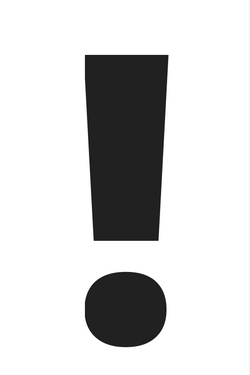
Step up to level-up your basic music theory skills:
Take action straight away to get the basic music theory you need as a producer under your belt once and for all.
- Google each of the terms I've mentioned above and take notes and study the concepts until you feel you know enough. Apply what you learn to your tracks.
- Get
a copy of "Music Theory for Computer Musicians" (affiliate) over at Amazon right
now and absorb it. It's just the basic music theory you shouldn't really be without
as a producer.
- Check out Hooktheory (affiliate) and musictheory.net.
Get More Skills for Your Producer Skill-Stack:


Learn to understand equalisers and frequencies to supercharge your mixing skills and get results, fast...

New producer? Learn everything you need to produce your first professional track right now...
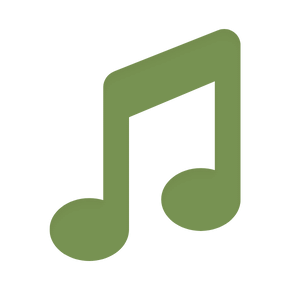
Would you like to discover the simplest and easiest way to learn music theory as a music producer?
Share this post. Spread the knowledge so other producers can benefit too:
- Renegade Producer
- Producer Skills
- Music Theory
ⓘ Some pages contain affiliate links so I might earn a commission when you buy through my links. Thanks for your support! Learn more

